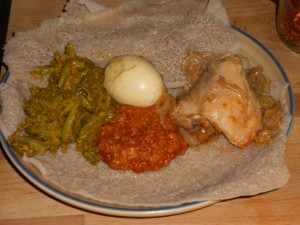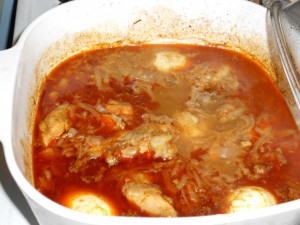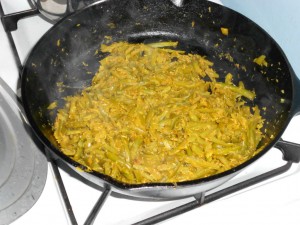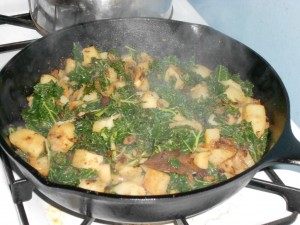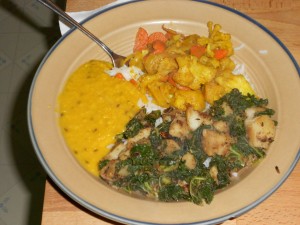Today is the one year anniversary of the Egyptian Revolution, which seemed like a good day to finally write my review of Zeina by Nawal El Saadawi. I received the book as part of LibraryThing‘s Early Reviewers program, started reading it in the fall and finished it a few days ago. I don’t pretend to be any expert on Egypt, Egyptian novels, or Egyptian writers (though I did find this article on Egyptian Revolutions informative) . . . but I had read other works by Nawal El Saadawi, so I requested this new novel. If you are unfamiliar with Nawal El Saadawi, please follow the link above to learn more about her. I find her inspiring! (NOTE: today’s assignment in the 30 Days of Love is to share a story of courageous love . . . Nawal El Saadawi’s story, and the stories she tells of the women of Egypt, are definitely stories of courageous love!)

Zeina (2009) Saadawi, Nawal El, London: SAQI Books, 2011. First published in Arabic by Dar al Saqi, 2009. Nowaira, Amira (Translator), ISBN 9780863564178
Set in Egypt as a modern revolution is about to explode but looking back to a previous revolution, the characters drift between reality and fantasy, past and present, sanity and insanity. Only Zeina seems at home in/with herself, and much of the time the reader is unsure whether or not Zeina is real or a fantasy. Bodour, may or may not be Zeina’s mother (unknown to Zeina) . . . or is Bodour merely projecting onto Zeina her guilt about abandoning her child long ago? And what to make of the novel within the novel and characters (Badreya) that drift in and out of their fictional status?
The novel explores: idealism and compromise, hypocrisy and revolution, the role of the artist/writer in revolution . . . religion, sexism, violence against women (especially how guilt over sexual longing can transform into hatred and violence toward women) . . . families, relationships, and secrets.
Most of the men are portrayed as either jerks or martyrs, which is unfortunate. They may be immersed in the Three Books of God (the Torah, the Bible, and the Qur’an), but what they take from religion is full of contradictions. In several sections the novel quotes from the three books, illustrating the source of the men’s attitudes towards women. Only the chauffeur seems to see things as they are rather than through a set of ideological lenses.
Many years ago I read Nawal El Saadawi’s earlier classic novel, Woman at Point Zero, and excerpts from The Hidden Face of Eve: Women in the Arab World; many of the same themes are at play in Zeina. I wish I knew more about the history of revolutions in Egypt. My sense is that much of this novel has a basis in that history. I have been reading quite a bit about the current revolution in Egypt (2010-2012, but generally dated as starting January 25, 2011) and am struck by how prescient this novel (written in 2009) was.
Below I quote some of the passages I marked as I was reading the novel. They will likely give you a better sense of its style and main points . . . I hope they will encourage you to read Zeina.
Noted passages:
“Yet something attracted me to the streets. Inside our home, the walls were painted bright pink, but the air was heavy as though it were filled with invisible smoke which the eye couldn’t see and the nose couldn’t sniff. I felt it seep softly through my body, saturated with hatred, silence, depression, and an imperceptible sadness.” p. 11
“I had no idea then what love between a man and a woman meant. I often scrutinized the faces of my father and mother to detect a look of love in their eyes. But I never succeeded in discovering the presence of a single loving glance in our home, until I grew up and understood things I hadn’t known.” p. 11
“Hypocrisy had become the hallmark of the age. It was an epidemic that infected all, including doctors. There was no remedy for it except a revolution or a volcano erupting from the earth.” p. 74
“The knife was moving as if of its own accord. Bodour might have been sleeping and dreaming and not sitting at the breakfast table. since she had started writing her novel, the lines between reality and dream had become confused. the novel could have been the source of the ghosts chasing her, the voices she heard as she sat writing in her room, the shadows that moved over the walls, assuming human and non-human shapes.” p. 76
“Bodour stared at her daughter Mageeda, who was eight years old. But she drove the memory out of her mind. She remembered that she was her age. But she didn’t tell her daughter the secret, and it stayed buried within her, locked inside an iron cage under the ribs. She didn’t have the courage or the daring to open it without splitting her heart in two or tearing her liver out of her body with the knife.” p. 103
“As far back as she could remember, she heard women repeat the saying, ‘Trusting a man is like trusting water to stay in a sieve.'” p. 136
“As Bodour was engrossed in writing, Badreya whispered in her ear. ‘You’re a hopeless coward. Nothing but writing can cure you of cowardice. Only the letters on the page can cure you of your pain and sadness. With black, blue or red ink, shed your blood on paper, Bodour, cut your chest open with the knife and open your heart. Only the knife can cure you. Don’t keep your tears locked inside, let them loose the way you scream out in the face of God and the Devil. Don’t fear death or hell fire. You’ve had enough hell on earth.’ ” p. 140
“‘But God, Badreya, told me I would die if I ate from the tree.’ . . . . ‘That was the voice of the Devil, Bodour, and not God. If it was God’s voice, it wouldn’t be any different from the Devil’s I ate from the tree, Bodour, and so did all the creative men and women in all the areas of knowledge, from philosophy and art to science. Human civilization was built on their ideas. We’ve never tasted anything better than the fruit of this tree. We enjoyed the pleasure of knowledge and the exuberance of life, and not a fake dead life. If God stopped you from enjoying life, then He was not God but the Devil. Satan’s pointed finger stole your life and your novel, Bodour.'” pp. 145-146
“Mahmoud, the driver, walked on the sand wearing bright bathing trunks colored red, green, blue, yellow, and purple. It was the Islamic bathing outfit which covered men’s thighs down to their knees. But the esteemed masculine member often stood out from underneath the colorful rubber trunks. However, it was no shame for a man to have a rebellious member that had no piety or fear of God. It was no disgrace for a man to swim in the sea. It was forbidden for women to show their faces, let alone their thighs, legs or arms. The emir issued a ruling that women’s voices were a source of shame. Every part of their bodies, in fact, was a shame, including the head, the seat of thought and intellect.” p. 174
“The emir urinated like all other mortals and the chauffeur heard the sound of the urine as it dropped into the luxurious ceramic toilet bowl imported from Europe, the land of infidels and unbelievers. The chauffeur often drove the thoughts that Satan whispered in his ears out of his mind. But when he heard the sound of the emir urinating, he couldn’t help noticing that it was peculiarly similar to his own. Princes and common folk were equal when it came to urinating, for God in His infinite wisdom didn’t discriminate between a poor man and an prince.” p. 175
“Bodour shook her soft white hand in Badreya’s face, chasing her terrifying black spectre, raising her pen to gouge her eyes out and stop her voice. But Badreya had no eyes and no tongue. she was a roaming spirit, appearing at night on the walls like a phantom, peering like Satan’s finger from between the pages of the novel, like God’s finger, and as real as God and Satan. She was the great truth of her life. Bodour might doubt the existence of Satan or God, but Badreya was the only irrefutable truth in her life. She was authenticity itself, and everything else was untrue, unimportant, unnecessary, and unreal.” p. 209
“Zeina Bint Zeinat is an exceptional artist par excellence. Her genius is revealed in the simplest movement she makes. As soon as she enters the auditorium or appears on stage, her presence annihilates everything else around her. Eyes never tire of looking at her. Her spirit lifts our souls to the high heavens. Her ingenious voice assumes a palpable shape in our ears. We can tough it and taste it like red wine, because it can remove distances between hearts. Her tunes throw light on the dark corners of our minds. We become intoxicated with the joy of knowledge and overwhelmed with an unparalleled kind of ecstasy.” p. 213
“Her eyes were wide with astonishment. It was beyond her comprehension why this small piece of flesh had such devastating power and importance. States and religious were built on it. History carried it as a banner and marched with it since time immemorial. It was this piece of flesh that placed women in the jail of serfdom and humiliated men. It led elderly men to rape little girls, and pious men to lose two thirds of their minds when it was aroused. This piece of flesh deprived three million children in a single country of their human rights. Born on the streets, they lived and died there. the little shrunken mouse between the thighs pronounced the verdict of untimely death on millions of girls. It took away their joy and their smile and their hope and the dreams of their childhood. This little mouse swallowed Viagra in the darkness of the night in the hope of being resurrected and reborn once again.” pp. 229-230
“She used to think of loneliness as a punishment or a pain she should avoid, and not as a pleasure she should look forward to. Before leaving she asked Badreya, ‘Was it through loneliness that I left the world or went deeply into it?’ . . . . Seeing her dragging the suitcase behind her, Badreya whispered in a low voice, ‘Loneliness isn’t a pleasure in itself, but it may create new pleasures. You may write a new novel or live a bigger love than your first stunted love. You may write using the first personal pronoun, I, instead of hiding behind another woman and using the third personal pronoun, she. You may abandon literary criticism and stop polishing other people’s shoes, including those of your husband. You may begin to polish your own shoes and see your real self on the page . . .'” pp. 232-233
P.S. for more of my LibraryThing reviews and to see the parts of my library cataloged there, please visit: http://www.librarything.com/profile/LucindaLibri

